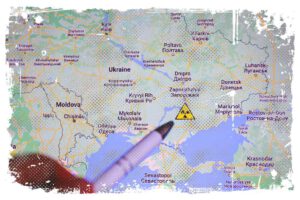We are constantly evolving and moving forward as a society. It’s important to remember where we came from and not forget the traditions that have been passed down through our families. These traditions can provide us with role models for the future, helping us to understand our identity. They also allow us to tap into the wisdom of our ancestors as well as learn about their life in the past. Which for sure is very different from our life today.

Many families still maintain their traditions, whether only during holidays or just as a part of their daily lives. One such tradition in Polish homes is the celebration of autumn. It’s important for parents to remember the value of these traditions and to pass them down to their children, whether it’s through storytelling or simply by cultivating them. In today’s fast-paced world, it’s more important than ever to hold onto these traditions and pass them on to the next generation.
Traditional Polish Harvest Festivals in Autumn
The Harvest Festival is a time of celebration for those who work the land and cultivate crops. It takes place at the end of the harvest season, and it is a time of joy and pride for a job well done. It’s a time for rural communities to relax and enjoy themselves after a busy summer. While work on farms never truly ends, the end of the harvest gives a chance for a brief break before the preparations for the next season begin. As the harvested grain is stored in silos and grain-buying agencies compete to purchase it from farmers, it’s a unique opportunity for peasants and their families to come together and celebrate the fruits of their labor.
Old Customs and Ceremonies
The celebration of the end of the harvest has a long history, dating back to the earliest days of farming. In the past, a successful harvest was essential for the survival of a community, as a poor harvest could lead to starvation or even death during the winter months. Therefore, the filling of storehouses with food was cause for great joy and celebration. Ancient villagers would hold games and ceremonies to thank the gods for their protection and to beg for their continued support in the coming year. These traditions have been passed down through the generations and continue to be celebrated in many cultures today, even though the stakes may not be quite as high as they once were.
↳ PRO TIP: Do you like traveling? Then before you buy any ticket or book an attraction, check if it's available in this worldwide Viator Database. You may save a lot of money and time. No need to thank me :)
Ancient Slavs
In Slavic culture, the seasons were seen as divine beings that left behind gifts such as grain, fruit, animals, and fish for the community. If you are interested in Slavs, please read this article I wrote: It’s Incredible How Poland Got It’s Name. As a way of expressing gratitude, Slavic festivals often included thanksgiving ceremonies for various deities.
During these celebrations, popular fruits like pears, plums, and apples were particularly revered, as it was the end of the forest fruit harvest. The „fruit spa” period in the second half of August was a time for drying mushrooms and preparing preserves of berries and blackberries. These traditions allowed the community to come together and give thanks for the abundance provided by the seasons.
Sauerkraut
Sauerkraut is a traditional dish hailing from Poland that is made from fermented cabbage. It played a crucial role in the past as a way to stave off hunger during the pre-famine season, which occurred before the new harvest. The process of pickling cabbage was a community-wide event, with everyone in the family getting involved. The cabbage was peeled, shredded, salted, and then often kneaded with the feet to extract the juice. While this may seem amusing today, it was actually a practical method for preparing large quantities of sauerkraut.
When the preparation was complete, the family would gather for a meal featuring dishes made with cabbage, such as stuffed cabbage rolls, cabbage soup, or „łazanki” with cabbage (a type of pasta). These gatherings were not only a chance to enjoy a delicious meal, but also an opportunity for the elders to share stories and songs with the group.
The cabbage in the past was usully left in a dark room for a few days before being pickled. It was stored in stoneware or wooden barrels to prevent it from bitter taste.
Today, you can still experience this tradition at cabbage pickling workshops or sauerkraut pickling days in Charsznice, Malopolska. Such barrels are now often kept in attics or in museums as a reminder of this time-honored method of preserving cabbage.
Bigos
If you’re a fan of stews, you’ll love bigos! This traditional dish, developed in the 15th century, is prepared from a variety of different meats and vegetables. Supposedly, it was invented by a resourceful housewife who was looking for a way to make use of the leftover Christmas meat in a cost-efficient and tasty way. On top of pickling different vegetables, such as cabbage, bigos also evolved as a way to use up leftover meat that hadn’t been eaten.
Traditionally, bigos was cooked in a large cauldron. It was known as „bigos with bang” because of the unconventional way it was prepared. A cauldron’s lid was sealed with dough, and once pressure built up inside, it was opened with a bang, indicating that the bigos was ready for eating. This dish was popular among hunters, as well as it was a frequent gift to neighbors and members of the aristocracy.
Cabbage with meat, or bigos is mentioned in the Polish national epic „Pan Tadeusz”. It is a proof that it is a great „Polish” dish.
Autumn Traditions in Polish Folklore and Church
The 8th of September used to be the holiday of the Blessed Virgin Mary of Sowing. This holiday represented the beginning of the autumn sowing season, and the Virgin Mary was considered the patron of autumn sowing. It was believed that sowing a piece of land on this day would guarantee the Virgin Mary’s blessing. They also collected various herbs, grains and garden flowers, tied them into sheaves and brought them to the church for the priests to be blessed.
These dried sheaves were also used during rituals to provide protection. When a child was born, several bundles of straw were put under its head. When a girl was getting married, she would put the straw sheafs in her wedding dress, while the groom would use them to fill the pocket of his vest as protection against temptation. These customs were believed to bring good luck and protect from harm.
The 1st of November is, according to many different cultures, a day dedicated to the memory of the people who have died. It is believed that on this day the souls of the dead descend to earth. This belief has led to customs such as not pouring water in the evening so as not to accidentally douse the spirits, or opening churches for the night so that the souls can rest in peace. On this day, people also go to bed earlier in order not to disturb the spirits.
People prepare traditional dishes such as kutia, cabbage, scrambled eggs, meat, kiesel, or dumplings, and a spoon of each dish is set aside for starving souls. Formerly, dinner on November 1st was very hearty. The tables were full of cabbage, meats, kiesel cooked with mutton, kiesel with porridge, kiesel with dumplings, scrambled eggs with lard, and dry cheese. However, in 1779, clergy feasts were banned by the Church.
When does the calendar autumn starts in Poland in 2022?
Autumn in 2022 officially started on Friday, September 23. This day represents both the beginning of calendar and astronomical autumn.
Conclusion
Nowadays, autumn is often a time at home when people relax and enjoy a warm beverage. In the past, however, autumn was a time of celebration, especially in rural areas. September and October were the most popular months for weddings. This was because pantries were full after the harvest and there was plenty of food to share with the guests. It was therefore a perfect time to hold celebrations and gather people.
As the days became shorter and the weather became worse in autumn, people in rural communities gathered to participate in various tasks and activities. Potato digging, cabbage pickling, cabbage shredding, cabbage trampling or barrel beating were community events that provided opportunities for socialization, fun and laughs. In the evenings, women gathered to prepare the preserves as well as other homemade products, such as pillows, quilts and feather diapers. The younger girls, assisted by their older cousins, also prepared items for the family’s dowry. Singing together made the work even more enjoyable. Those activities used to bring people together and help create a sense of community during the colder and darker days of autumn.
Bibliography
- https://annaeverywhere.com/traditional-polish-food/
- https://en.wikipedia.org/wiki/Polish_cuisine
- https://uprawa-ziemi.pl/info-rol/dozynki-co-to-takiego/
- https://teatrnn.pl/leksykon/artykuly/obrzedy-jesienne/



